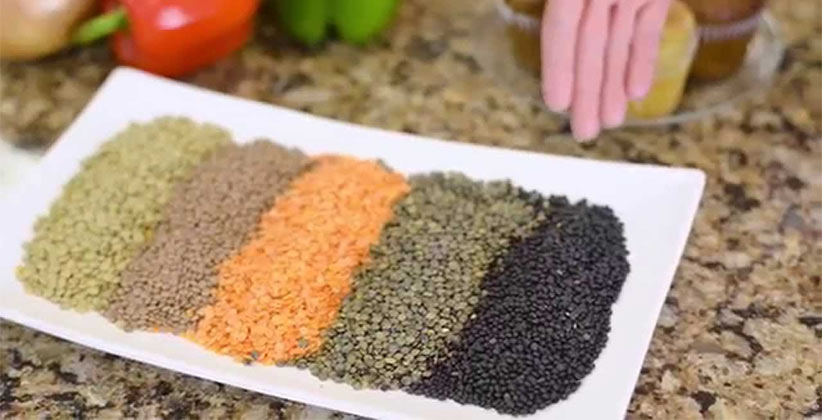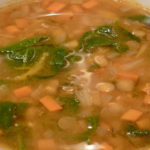 Lentils belong to the pulse or legume family, like peas and beans, but they are actually seeds. The biggest advantage of lentils versus beans is the fact that they don’t require soaking and they are best cooked in flavoured water or within a recipe for a soup or stew. Red or yellow lentils can be added directly to the pot and will act, as a thickener as they do not keep their shape. Brown, green and black lentils can be added around half an hour or so before the dish is finished and they will retain their shape and have a nice almost meaty texture.
Lentils belong to the pulse or legume family, like peas and beans, but they are actually seeds. The biggest advantage of lentils versus beans is the fact that they don’t require soaking and they are best cooked in flavoured water or within a recipe for a soup or stew. Red or yellow lentils can be added directly to the pot and will act, as a thickener as they do not keep their shape. Brown, green and black lentils can be added around half an hour or so before the dish is finished and they will retain their shape and have a nice almost meaty texture.
Lentils are a great source of protein for vegans and vegetarians. They are versatile, packed with vitamins and minerals and 100 grams will contain 26g of protein, which will provide you with nearly 52% of the daily-recommended allowance.
Varieties of Lentils
Puy
Puy lentils are considered ‘gourmet’ and are grown in a very specific region of France. They are small and dark and can be expensive. They take around 30 minutes to cook and are perfect served as a side instead of potatoes or a starch. They are also wonderful in some French cassoulet recipes, but you can substitute N. American green lentils for Puy if you can’t find them.
Green
Green lentils are similar to the Puy lentil but they are grown outside the named region. In some cases they are a little bigger than the Puy lentil but they are the most alike in the sense of cooking times and flavours. It can be hard to tell the difference between the brown or green lentils but if the package is simply labeled lentils, it will be the brown standard kind. They take around the same time to cook at the Puy lentils and will retain their texture and taste more so than the brown.
Brown
The most common lentil and slightly larger than the green or gourmet types these lentils will be the most familiar. They are sold in virtually all grocery stores as well as in bulk and are very inexpensive. They have a great earthy slightly peppery flavour and blend well with almost every recipe. They take around 30 to 40 minutes to cook and will become soft but retain their shape. They are a wonderful addition to soups, stews, crock-pot meals and slow cookers.
Yellow
Yellow lentils are most commonly used in Indian cooking and there are two types of yellow lentils. The first is Mung/Moong Dal. These are produced from dried and split mung beans with the ‘shell’ removed’. They are sometimes confused with Channa Dal, which is related to the chickpea family, or yellow split peas but they are not the same legume.
There are also toor lentils from India that are yellow with a tan shell, they’re sold skinned and split. They have a mild, nutty flavor, and they’re often cooked as a side dish or ground into flour.
Red
There are two types of red lentils; the first kind, which is a small salmon coloured lentil, is the result of drying and splitting masoor dal. There is also a larger red lentil, which is a much softer almost pinkish salmon colour. They are a little bit larger than red lentils taking about 20 minutes to cook. They become quite mushy after cooking and are fantastic in curries. Masoor (also known as red lentil, Hindi: masoor, Gujarati: masoor) is a brown skinned lentil that is an orangey salmon color on the inside. Masoor dal has a pleasant earthy flavour and is very common in Northern India. It is used to make dal, soups and stews.
Black beluga
Black beluga lentils are a ‘gourmet’ lentil that is a small black lens shaped lentil. They are small and when cooked have a soft creamy texture that goes well with fish and seafood dishes. They are named Beluga for their resemblance to caviar as they tend to retain a little shine when cooked.
If you need more information about lentils, grain or pulses or you are looking for a Canadian lentil exporter, give AdasCan Grain a call at +1 (416) 548-5901 today!
Extracted from: https://theeverydayvegetarianuk.wordpress.com/2013/11/22/confused-by-different-types-of-lentils/




Comments are closed.